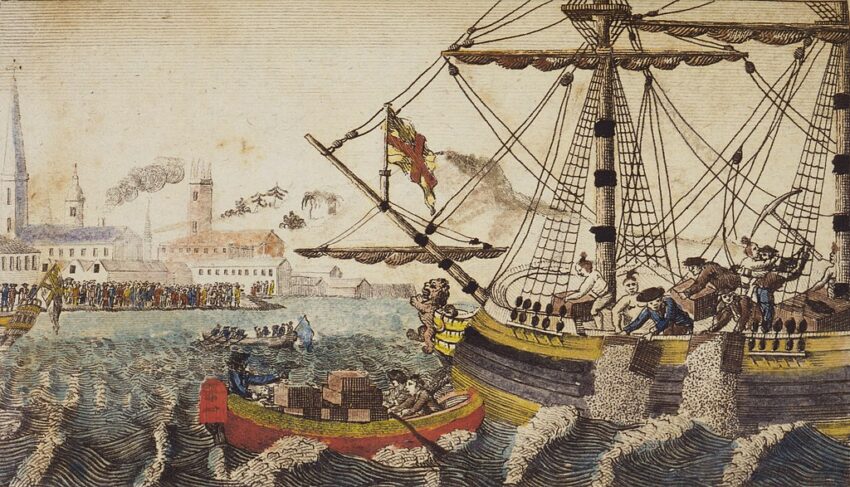American Revolution Quiz Questions
1. What was the name of the pamphlet written by Thomas Paine that argued for American independence?
(a) The Intolerable Acts
(b) Common Sense
(c) The Declaration of Independence
(d) The Olive Branch Petition
2. The first battles of the American Revolution took place at:
(a) Yorktown and Saratoga
(b) Lexington and Concord
(c) Trenton and Princeton
(d) Valley Forge and Germantown
3. Which important document declared the reasons for the colonists’ desire for independence from Great Britain?
(a) The Articles of Confederation
(b) The Declaration of Independence
(c) The Constitution of the United States
(d) The Mayflower Compact
4. Who was the main author of the Declaration of Independence?
(a) John Adams
(b) Thomas Jefferson
(c) Benjamin Franklin
(d) George Washington
5. Which European nation became a crucial ally of the American colonists during the war?
(a) Spain
(b) France
(c) Netherlands
(d) Russia
6. The turning point of the American Revolution is often associated with the victory at:
(a) Bunker Hill
(b) Saratoga
(c) Yorktown
(d) Monmouth
7. Which winter encampment of the Continental Army is known for harsh conditions and soldier suffering?
(a) Valley Forge
(b) Morristown
(c) Newburgh
(d) Middlebrook
8. Who was the commander-in-chief of the Continental Army during the American Revolution?
(a) Benedict Arnold
(b) Nathanael Greene
(c) George Washington
(d) Marquis de Lafayette
9. The final major battle of the American Revolution, leading to British surrender, occurred at:
(a) Boston
(b) Philadelphia
(c) Yorktown
(d) Charleston
10. What treaty formally ended the American Revolution and recognized the independence of the United States?
(a) Treaty of Yorktown (1763)
(b) Treaty of Alliance (1778)
(c) Treaty of Paris (1783)
(d) Articles of Confederation (1777)
11. What was the name of the group of colonists who remained loyal to Great Britain during the Revolution?
(a) Patriots
(b) Minutemen
(c) Loyalists
(d) Continentals
12. What was the purpose of the Committees of Correspondence?
(a) To tax British goods
(b) To plan and coordinate colonial resistance
(c) To recruit soldiers for the British Army
(d) To enforce the Navigation Acts
13. The Boston Tea Party was a protest against what British policy?
(a) Quartering Act
(b) Sugar Act
(c) Tea Act
(d) Proclamation of 1763
14. What was the purpose of the Intolerable Acts passed by the British Parliament?
(a) To grant greater autonomy to the colonies
(b) To punish Massachusetts for the Boston Tea Party
(c) To raise revenue from the colonists
(d) To strengthen military presence in the colonies
15. What was the significance of the Second Continental Congress?
(a) To establish a colonial militia
(b) To create a unified government for the colonies
(c) To negotiate a peace treaty with Britain
(d) To plan the Boston Tea Party
16. Which of the following was a key principle outlined in the Declaration of Independence?
(a) Divine Right of Kings
(b) Consent of the Governed
(c) Absolute Monarchy
(d) Unlimited Power of Parliament
17. The document outlining the new American government was:
(a) Articles of Confederation
(b) Constitution
(c) Mayflower Compact
(d) Declaration of Independence
18. What was the name of the British general who surrendered at Yorktown, effectively ending the war?
(a) General Howe
(b) General Gage
(c) General Cornwallis
(d) General Burgoyne
19. Which of the following was a tax on all printed materials like newspapers and pamphlets?
(a) Sugar Act
(b) Stamp Act
(c) Townshend Acts
(d) Tea Act
20. Which group of colonists organized local militias and were ready to fight at a minute’s notice?
(a) Continentals
(b) Minutemen
(c) Loyalists
(d) Redcoats
American Revolution Quiz Questions with Answers
1. What was the name of the pamphlet written by Thomas Paine that argued for American independence?
(b) Common Sense
2. The first battles of the American Revolution took place at:
(b) Lexington and Concord
3. Which important document declared the reasons for the colonists’ desire for independence from Great Britain?
(b) The Declaration of Independence
4. Who was the main author of the Declaration of Independence?
(b) Thomas Jefferson
5. Which European nation became a crucial ally of the American colonists during the war?
(b) France
6. The turning point of the American Revolution is often associated with the victory at:
(b) Saratoga
7. Which winter encampment of the Continental Army is known for harsh conditions and soldier suffering?
(a) Valley Forge
8. Who was the commander-in-chief of the Continental Army during the American Revolution?
(c) George Washington
9. The final major battle of the American Revolution, leading to British surrender, occurred at:
(c) Yorktown
10. What treaty formally ended the American Revolution and recognized the independence of the United States?
(c) Treaty of Paris (1783)
11. What was the name of the group of colonists who remained loyal to Great Britain during the Revolution?
(c) Loyalists
12. What was the purpose of the Committees of Correspondence?
(b) To plan and coordinate colonial resistance
13. The Boston Tea Party was a protest against what British policy?
(c) Tea Act
14. What was the purpose of the Intolerable Acts passed by the British Parliament?
(b) To punish Massachusetts for the Boston Tea Party
15. What was the significance of the Second Continental Congress?
(b) To create a unified government for the colonies
16. Which of the following was a key principle outlined in the Declaration of Independence?
(b) Consent of the Governed
17. The document outlining the new American government was:
(b) Constitution
18. What was the name of the British general who surrendered at Yorktown, effectively ending the war?
(c) General Cornwallis
19. Which of the following was a tax on all printed materials like newspapers and pamphlets?
(b) Stamp Act
20. Which group of colonists organized local militias and were ready to fight at a minute’s notice?
(b) Minutemen

